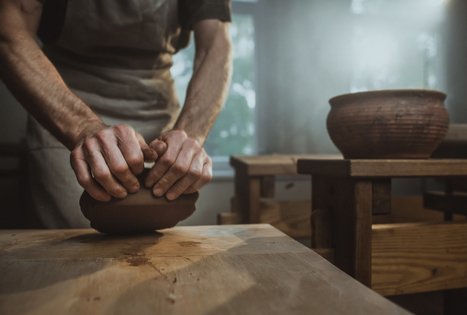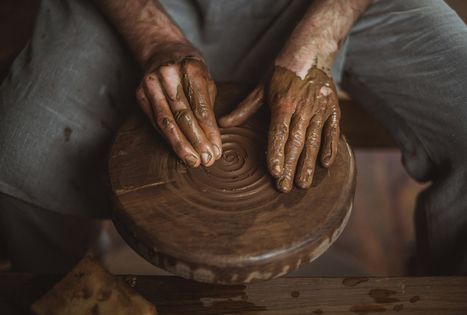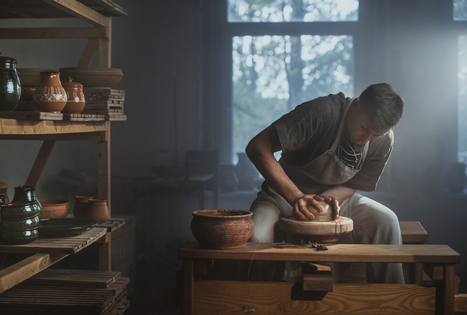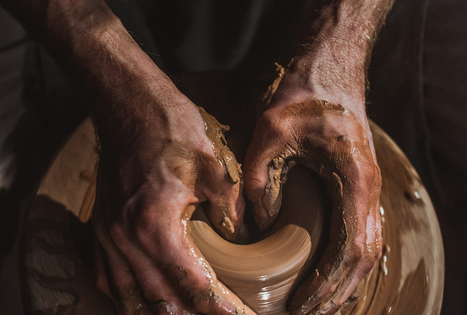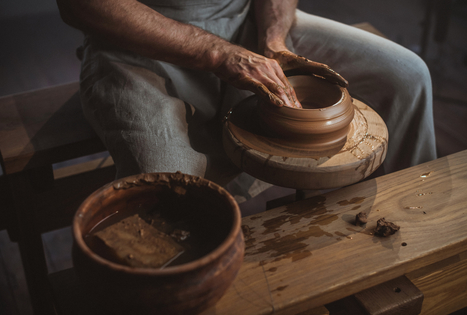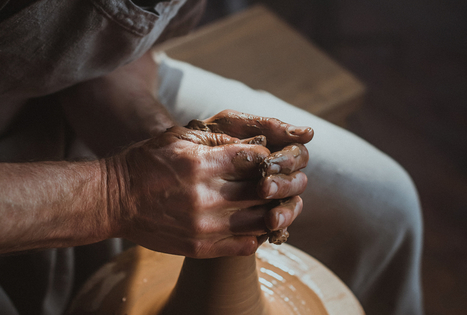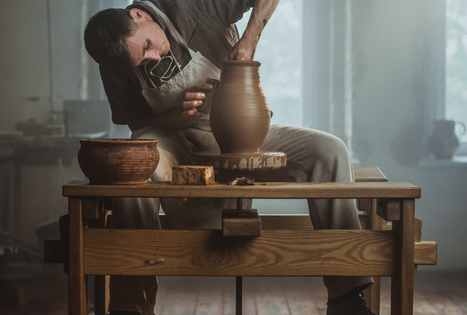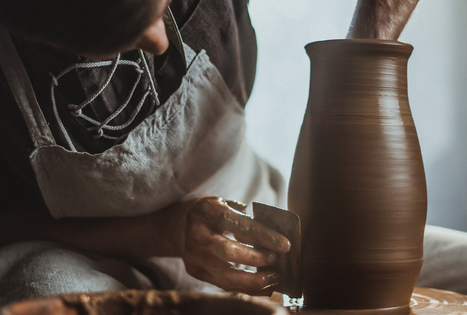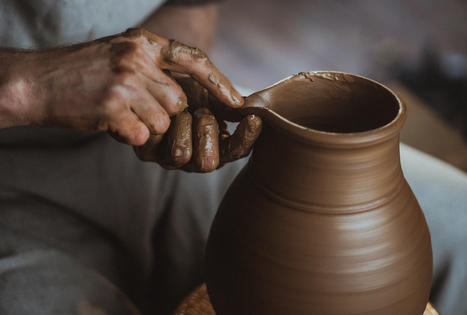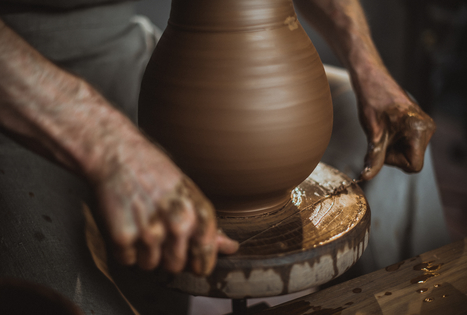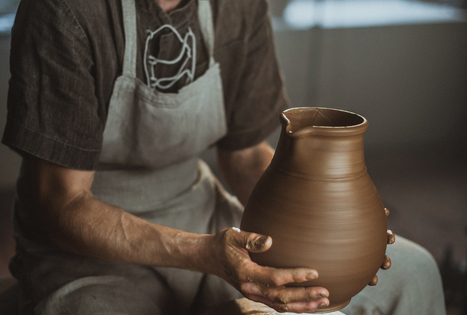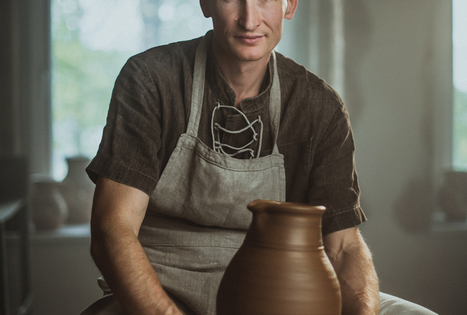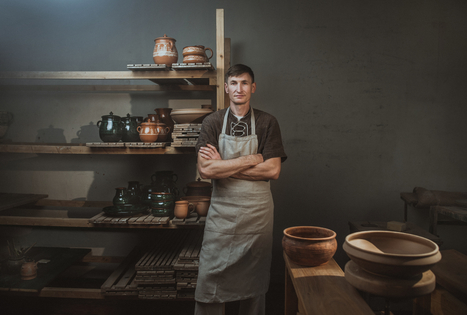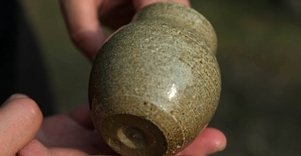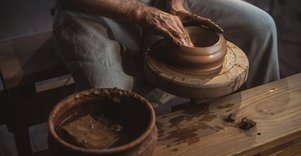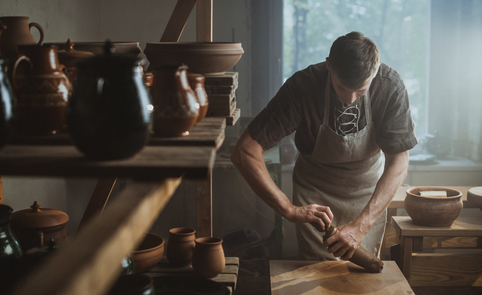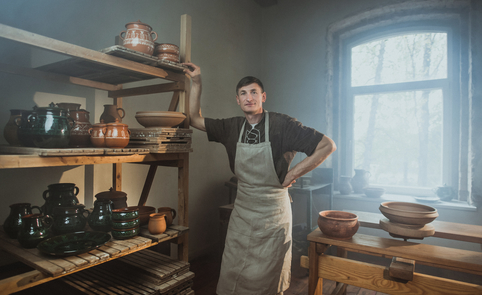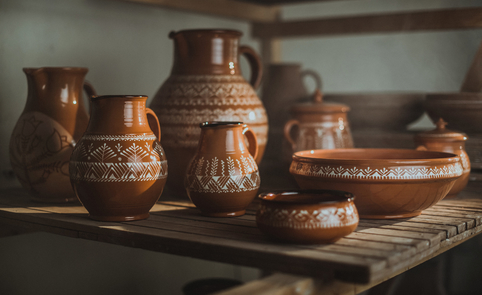This is one of the oldest crafts, where items made from various types of plastic clay are formed by being thrown with a potter’s wheel, hand-built, pressed or stamped.
A history that goes back to the Neolithic period
Pots come in many shapes and can be unadorned or decorated with carved, embossed or painted floral and geometric designs or figural compositions; they can be unglazed or finished with coloured glaze. Once they are shaped, the items are dried and then fired at temperatures between 900 and 1,450 °C to give them strength; glazed articles are fired a second time.
Pots for making and storing food were already being made from clay with admixtures during the Neolithic period. Both men and women have been engaged in pottery since ancient times. The potter’s wheel began to be used around 4000 BC in the Near East, first rotated by hand and later by foot. The potter’s wheel made its way to Europe around 1000 BC. Pottery became popular in ancient Greece and Rome, and was perfected in the Far East.
A craft that appeared in Lithuania together with the potter’s wheel
Moulded clay vessels from the Neolithic period have also been found in Lithuania. They were used as containers for storing, making and eating food, as well as for grave goods. The craft of pottery only emerged in Lithuania in the 10th century, with the appearance of the potter’s wheel. And it was in the 13th century that potter’s wheels operated by foot also appeared in towns. Earthenware began to be fired in kilns. In the 14th–15th centuries, potters set up shop near castles and manors, and in the 16th century they started grouping into manufactories. In the late 19th century and the 20th century, distinctive pottery making techniques, shapes and traditions formed in western Lithuania, Sudovia, eastern Lithuania, and central and north-eastern Lithuania.
Pottery was developed the most in the region of Samogitia. Pottery centres formed in areas where suitable clay was mined. Due to the abundance of red clay deposits, pottery which stood out for its naturalness and simplicity flourished in Kuršėnai.
In the late 19th century and the 20th century, most of the throwers in the Suwalki and Kaunas Governments worked alone in villages or at home workshops. During that period, the potter’s craft was learned from an early age from the older generation: fathers, brothers, uncles. By the age of 10–12, children knew how to prepare the clay, heat the kiln, and dry, decorate and fire wares, and by the age of 15–17 they were already working independently. In towns, where workshops were open year-round, it was also possible to learn the craft from strangers. When a potter’s family was unable to handle all of the ancillary work, they took on apprentices.
Earthenware
In Lithuania, the most common types of ceramic ware were dishes for preparing, eating and storing food, as well as toys.
Dishes for preparing food included boiling pots, pans (casseroles) and poppy grinders. All of these dishes are the least ornate. Only some are decorated with etched or pressed lines and curves. Dishes for storing food included jugs, glazed bowls, double-handle bowls and pitcher bottles. These vessels already featured with coloured glaze, but not much ornamentation. The most abundant were decorative tableware and articles for the interior. Jugs, bowls, cups, butter holders and salt cellars to put on the table for a guest. Interior items – flower pots, vases, candlesticks – were meant to give the home cosiness. As a result, these items are more decorative and have more interesting shapes. Geometric and floral motifs are popular in their decoration.
An important place was given to clay toys. They were especially prevalent in rural areas. Sculpted horses, riders, ducks, lambs, and – less often – dolls, roosters, peewits and goats. Horses and riders were made for boys, and ducks were for girls. Most clay toys doubled as whistles. Rich, bright colours were popular for decorating whistles. How nice the whistle looked was important, but so was the sound that it emitted.
Preparation for pottery and the manufacturing process
The firing oven – the kiln – used to be outside. It was about 2 metres tall. It was round in shape with a top width of about 1.5 metres. Its walls were made of unfired bricks. The bottom of the oven was above the burner. The oven had two openings on opposite sides to kindle the fire. The flames reached the very top through the holes in the floor.
Pottery was usually fired at night, because in the dark, you could guess from the colour of the flame whether it was already done. When the fire was extinguished, it was covered with dirt and left to cool gradually to keep the dishes from exploding from a draft or from sudden cooling.
Wares made in the summer were dried in the shade, while in the winter they were dried on shelves at home, closer to the oven. The dishes made were also glazed.
Pottery today
During the Soviet occupation, potters were forced to group together at collective farms. However, the Lithuanian Folk Artists Union undertook reviving pottery traditions.
There are currently 52 certified potters in Lithuania who make pitchers, bowls, plates, pots, jars and other wares.


